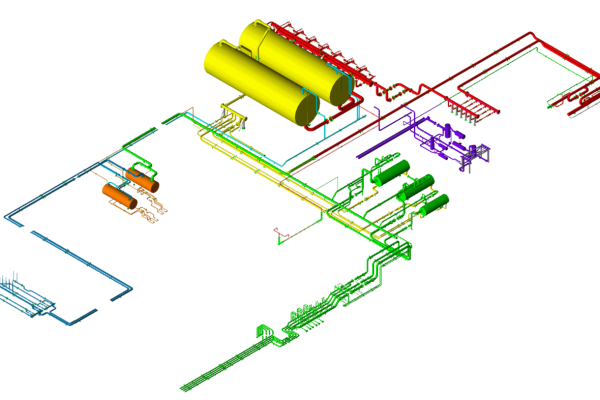Introduction
In the past, visible vibrations were observed in the piping connected to hydrogen compressors. These vibrations were particularly noticeable in the small-bore pipes branching off from the main pipes. Over time, these small-bore pipes frequently developed cracks, likely due to fatigue.
Analysis
To understand and address this issue, a numerical computer model was developed to simulate the mechanical behavior of the piping system under the influence of pulsation forces generated by the compressors. This model incorporated several key elements:
- Isometric Drawings: Detailed diagrams of the piping system.
- Piping and Support Specifications: Technical details and standards for the pipes and their supports.
- Site Photographs: Visual documentation of the actual installation.
- Pulsation Report: Data from the compressor manufacturer detailing the pulsation forces.
By matching the simulated vibrations with those measured on-site, the model was fine-tuned to accurately reflect the real-world conditions.
Results
The analysis revealed that vibration levels and the resulting stresses in the piping system could be significantly reduced by modifying existing supports at both the suction and discharge stages. Implementing these changes was expected to lower stress levels, thereby preventing future fatigue cracks.
However, it was also noted that these modifications would result in larger loads on the supports due to the thermal expansion of the piping system. While these loads were anticipated to be small enough to be supported by the existing steel structures, it was recommended to verify this assumption before proceeding with the modifications.
Additionally, further reduction of vibrations could be achieved through several measures:
- Revising the existing supports.
- Installing gussets on a few supporting steel beams.
- Tightening the nuts and bolts on the supporting beams.
- Strengthening the support structure near the platform outside the compressor building.
While the effects of these additional measures were not specifically analyzed, many of them were considered to be low-cost and relatively easy to implement.







